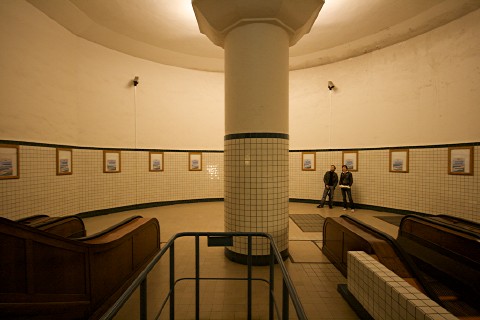More good news. The session proposed to the 2013 conference of the RGS–IBG (28 – 30 August) by Lars Meier and me was accepted in full, so that we will have two consecutive time slots. This should allow for a good framing and many opportunities for discussion and shared development of our theme.
We are really happy that this worked out so well and are looking forward very much to going into more depth with the problematic sides of art and resistance in public spaces, which we really think is tremendously under-researched, as political and artist action seems quite prone to turning a blind eye towards its own reach and its potentials for exclusion.
Below you will find the program for both sessions. The final program is not yet set up, so we don’t know the exact date & time:
Resistance in public spaces – Questions of distinction, duration and expansion (1)
Convenor(s): Lars Frers (Telemark University College, Norway), Lars Meier (Technical University of Berlin, Germany):
Chair(s): Lars Meier (Technical University of Berlin, Germany)
· Questioning the limits of resistance
Lars Frers (Telemark University College, Norway), Lars Meier (Technical University of Berlin, Germany)
· Joubert Park Project: The limits of resistance in an urban public park
Ingrid Marais (University of South Africa)
· Independent Art Spaces in Egypt
Elisabeth Jaquette (Columbia University)
· Temporary use as perennial challenge: A case study of the grassroot’s role in re-establishing the right to the city in post-quake Christchurch
Suzanne Vallance (Lincoln University, New Zealand)
· Moral resistance: Performing Pro-Life and Pro-Choice resistance in public space
Lucy Jackson (University of Sheffield)
Resistance in public spaces – Questions of distinction, duration and expansion (2) – discussion & conclusions
Chair(s): Lars Frers (Telemark University College, Norway)
· The resistance of fun – fixed-gear cycling in public spaces
Roman Eichler (Carl von Ossietzky University Oldenburg)
· Tiananmen: The ‘Half-Life’ of the Event
Robert Emerton (Keele University)
· Spatial rights, aestheticisation of collective memories, and resistance to gentrification in Guangzhou, China
He Shenjing (School of Geography and Planning, Sun Yat-Sen )
· Discussant
Monica Degen (Brunel University)
 Three weeks ago, Alexander Schellow and I conducted a workshop called spatial research at the
Three weeks ago, Alexander Schellow and I conducted a workshop called spatial research at the